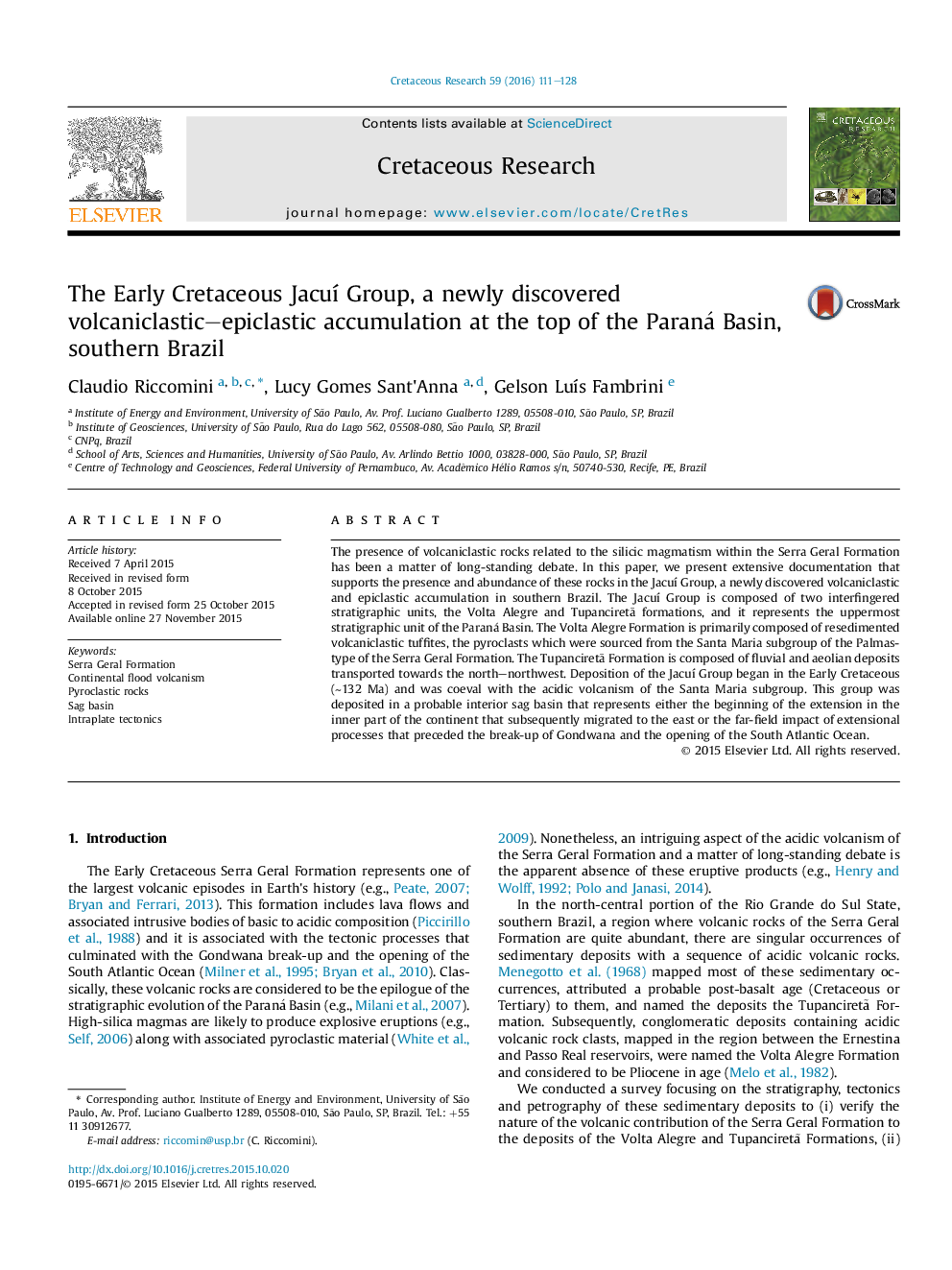| Article ID | Journal | Published Year | Pages | File Type |
|---|---|---|---|---|
| 4746792 | Cretaceous Research | 2016 | 18 Pages |
•The Jacuí Group is composed of resedimented tuffites deposited by mass flows and epiclastic fluvial–aeolian deposits.•The pyroclasts were sourced by the Palmas acidic volcanism of the Serra Geral Formation.•The beginning of deposition of the Jacuí Group is assigned to the Early Cretaceous (∼132 Ma).
The presence of volcaniclastic rocks related to the silicic magmatism within the Serra Geral Formation has been a matter of long-standing debate. In this paper, we present extensive documentation that supports the presence and abundance of these rocks in the Jacuí Group, a newly discovered volcaniclastic and epiclastic accumulation in southern Brazil. The Jacuí Group is composed of two interfingered stratigraphic units, the Volta Alegre and Tupanciretã formations, and it represents the uppermost stratigraphic unit of the Paraná Basin. The Volta Alegre Formation is primarily composed of resedimented volcaniclastic tuffites, the pyroclasts which were sourced from the Santa Maria subgroup of the Palmas-type of the Serra Geral Formation. The Tupanciretã Formation is composed of fluvial and aeolian deposits transported towards the north–northwest. Deposition of the Jacuí Group began in the Early Cretaceous (∼132 Ma) and was coeval with the acidic volcanism of the Santa Maria subgroup. This group was deposited in a probable interior sag basin that represents either the beginning of the extension in the inner part of the continent that subsequently migrated to the east or the far-field impact of extensional processes that preceded the break-up of Gondwana and the opening of the South Atlantic Ocean.
